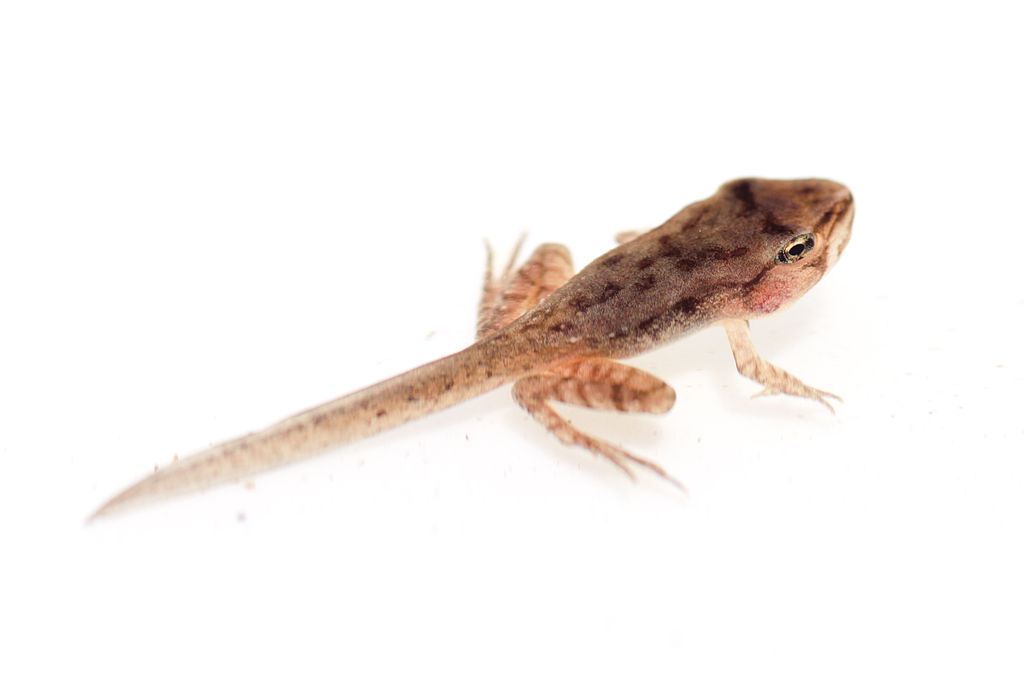More than 200,000 wood frog tadpoles died within 21 hours last year at a pond in Nat Wheelwright’s backyard in Brunswick, in what may be the largest and fastest mass death of tadpoles ever reported.
The Bowdoin College biology professor is trying to find out why.
“It was something I had never seen before,” said Wheelwright, who has studied the frogs in his yard for 28 years. “It was like a nuclear bomb went off.”
The tadpoles were covered with red hemorrhages and tested positive for ranavirus, which likely caused the die-off, said Wheelwright.
Ranavirus infects cold-blooded animals and is transmitted through groups, not just individuals. Besides the hemorrhages and slight bloating, the virus causes tadpoles to become lethargic and spend more time on the surface, making them more vulnerable to predators.
The infection has been linked to the decline of amphibians worldwide, including in the United Kingdom and Canada. Wheelwright and ranavirus researchers at the University of Tennessee, who helped diagnose the infection, published a report of the case in a recent issue of “Herpetological Review.”
Wheelwright discovered the dying tadpoles in June 2013 during a morning swim in the pond. His wife had noted the day before that it had more wood frog tadpoles than usual.
“This happened lightning fast, I don’t think it spread one-by-one,” Wheelwright said. “There must have been a low level of the infection in the tadpoles already.”
Despite the large die-off, Wheelwright said, the species is not in danger of extinction.
“It’s an abundant species so it’s not an immediate concern,” he said, while noting that regional populations can be hurt if there are continuous die-offs.
“The die-off is significant; however, in warm weather, we do see mass mortalities of wood frogs from ranavirus in some years,” Dr. Aram Calhoun, a professor of wetlands ecology at the University of Maine at Orono, said in an email. “We don’t know enough about the synergistic effects of all the stressors in a frog’s environment.”
Calhoun said that researchers are concerned about these issues and UMaine is using a four-year National Science Foundation research grant to study the effects of urbanizing landscapes on pool-breeding amphibians.
“Dr. Wheelright is correct in saying we need more vigilance and should encourage our citizen science base to monitor pools,” Calhoun said.
“However, these events happen quickly and in our experience, the carcasses are scavenged in less than 24 hours so people could easily miss die-off events.”
In a video, Wheelwright said to think about the significance of the die-off as “200,000 people, the size of Hartford, Connecticut, going belly up overnight.”
This year, Wheelwright said that the wood frogs came back to the pond, but there were no one-year-old frogs breeding and the number of tadpoles was lower than previous years.
“It’s definitely something that we should be monitoring,” he said.
Dr. Phillip deMaynadier, a Maine Department of Inland Fisheries & Wildlife amphibian specialist, could not be reached for comment.
Chelsea Diana can be contacted at 791-6337 or at:
cdiana@pressherald.com
Twitter: ChelseaDiana_
Send questions/comments to the editors.



Success. Please wait for the page to reload. If the page does not reload within 5 seconds, please refresh the page.
Enter your email and password to access comments.
Hi, to comment on stories you must . This profile is in addition to your subscription and website login.
Already have a commenting profile? .
Invalid username/password.
Please check your email to confirm and complete your registration.
Only subscribers are eligible to post comments. Please subscribe or login first for digital access. Here’s why.
Use the form below to reset your password. When you've submitted your account email, we will send an email with a reset code.